
- Home
- India
- World
- Premium
- THE FEDERAL SPECIAL
- Analysis
- States
- Perspective
- Videos
- Sports
- Education
- Entertainment
- Elections
- Features
- Health
- Business
- Series
- In memoriam: Sheikh Mujibur Rahman
- Bishnoi's Men
- NEET TANGLE
- Economy Series
- Earth Day
- Kashmir’s Frozen Turbulence
- India@75
- The legend of Ramjanmabhoomi
- Liberalisation@30
- How to tame a dragon
- Celebrating biodiversity
- Farm Matters
- 50 days of solitude
- Bringing Migrants Home
- Budget 2020
- Jharkhand Votes
- The Federal Investigates
- The Federal Impact
- Vanishing Sand
- Gandhi @ 150
- Andhra Today
- Field report
- Operation Gulmarg
- Pandemic @1 Mn in India
- The Federal Year-End
- The Zero Year
- Science
- Brand studio
- Newsletter
- Elections 2024
- Events
In photos: As Baul singers are targeted in Bangladesh, Bengal organises Baul-Fakir mela

Oh men, if you want to be godly,Abandon your aversion And the narrow bounds. Look at the scriptures—the Vedas There is no difference between The Bible and the Quran. Listen, Oh Hindus Listen, Oh Muslims Allah and Hari are not disparate. This profound message one least expects to hear from a wandering vagabond dressed in a funny multi-coloured unconventional robe.Bauls though...
Oh men, if you want to be godly,
Abandon your aversion
And the narrow bounds.
Look at the scriptures—the Vedas
There is no difference between
The Bible and the Quran.
Listen, Oh Hindus
Listen, Oh Muslims
Allah and Hari are not disparate.
This profound message one least expects to hear from a wandering vagabond dressed in a funny multi-coloured unconventional robe.
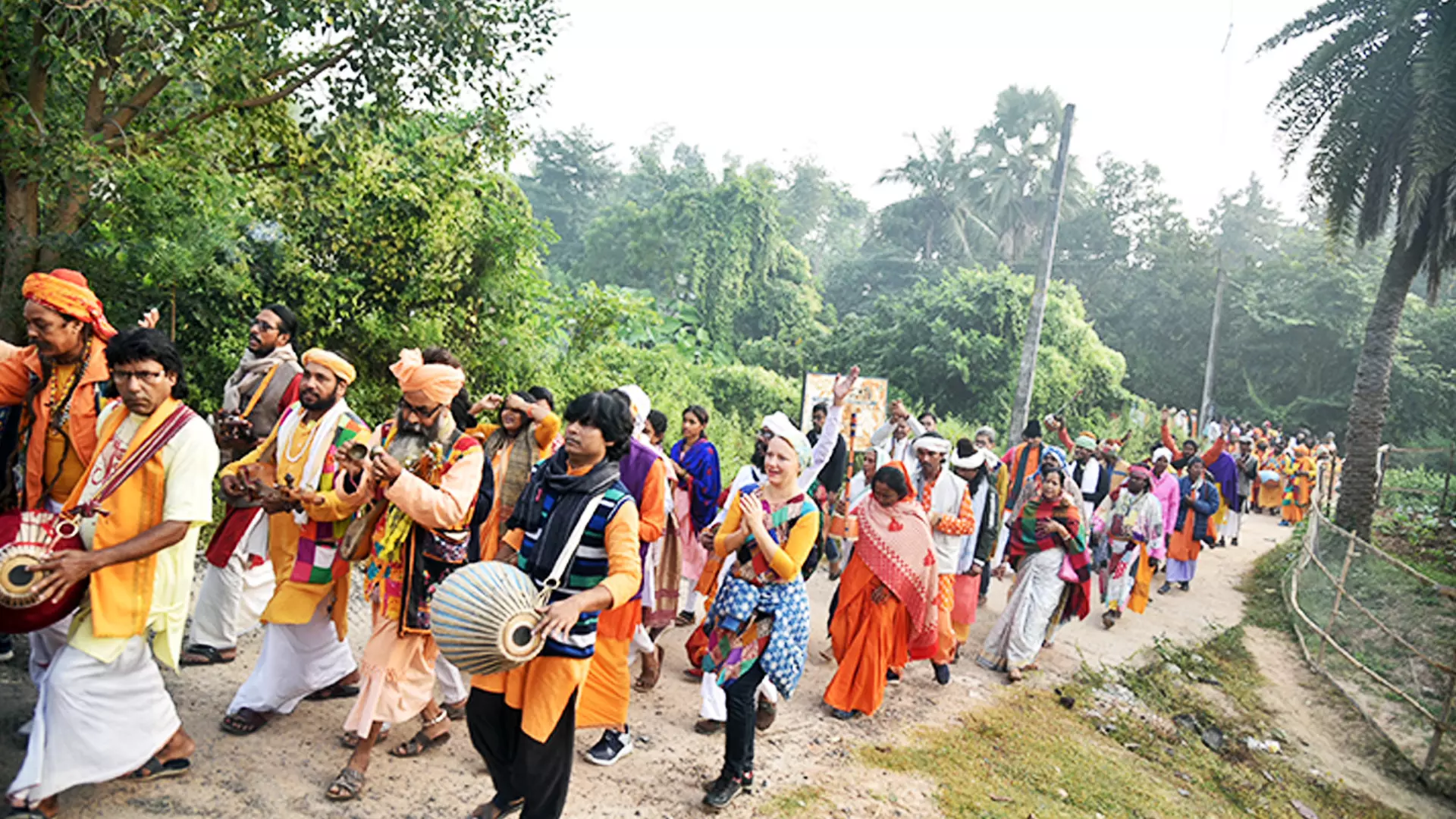
Bauls though a heterogenous group comprising diverse sects, are generally inspired by Bhaktism and Sufism.
That is, if you are not familiar with an inclusive group of mystic minstrels, who roam around the countryside of West Bengal and Bangladesh, spreading the message of oneness, love and ecstasy.
These freethinkers, paradoxically known as Bauls—literally meaning mad—have from time immemorial taken upon themselves, after giving up all worldly possessions, the task of spreading the universal message of love and humanity through their mystical songs.
Bauls though a heterogenous group comprising diverse sects, are generally inspired by Bhaktism and Sufism.
Of late, they are under constant attacks from Islamist fundamentalists in Bangladesh. This, despite the fact that the country’s Baul tradition was inscribed in UNESCO’s Intangible Cultural Heritage List in 2008 as one of the “masterpieces of the oral and intangible heritage of humanity” in South Asia.
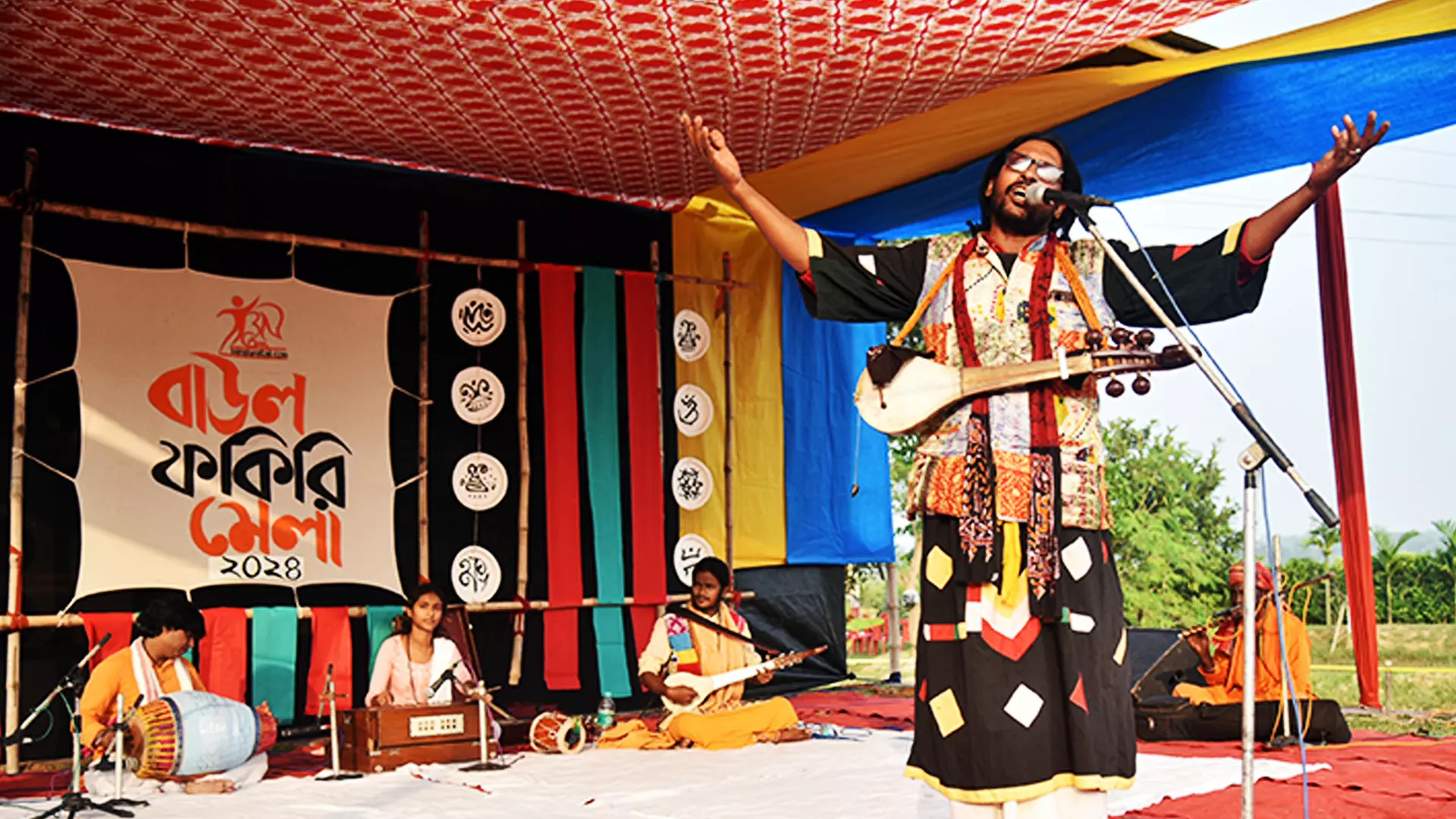
Bauls are under constant attacks from Islamist fundamentalists in Bangladesh.
“In the last few weeks, we have been made aware about a slew of attacks on Baul fakir akharas in Bangladesh. This is already a diminishing tradition. It is unfortunate that they have to strive for their very survival. We pray for their well-being and safety,” Parvathy Baul, one of the leading Baul practitioners, wrote on a social media post.
The Baul influence is also dwindling in West Bengal due to the growth of radical Hindutva forces.
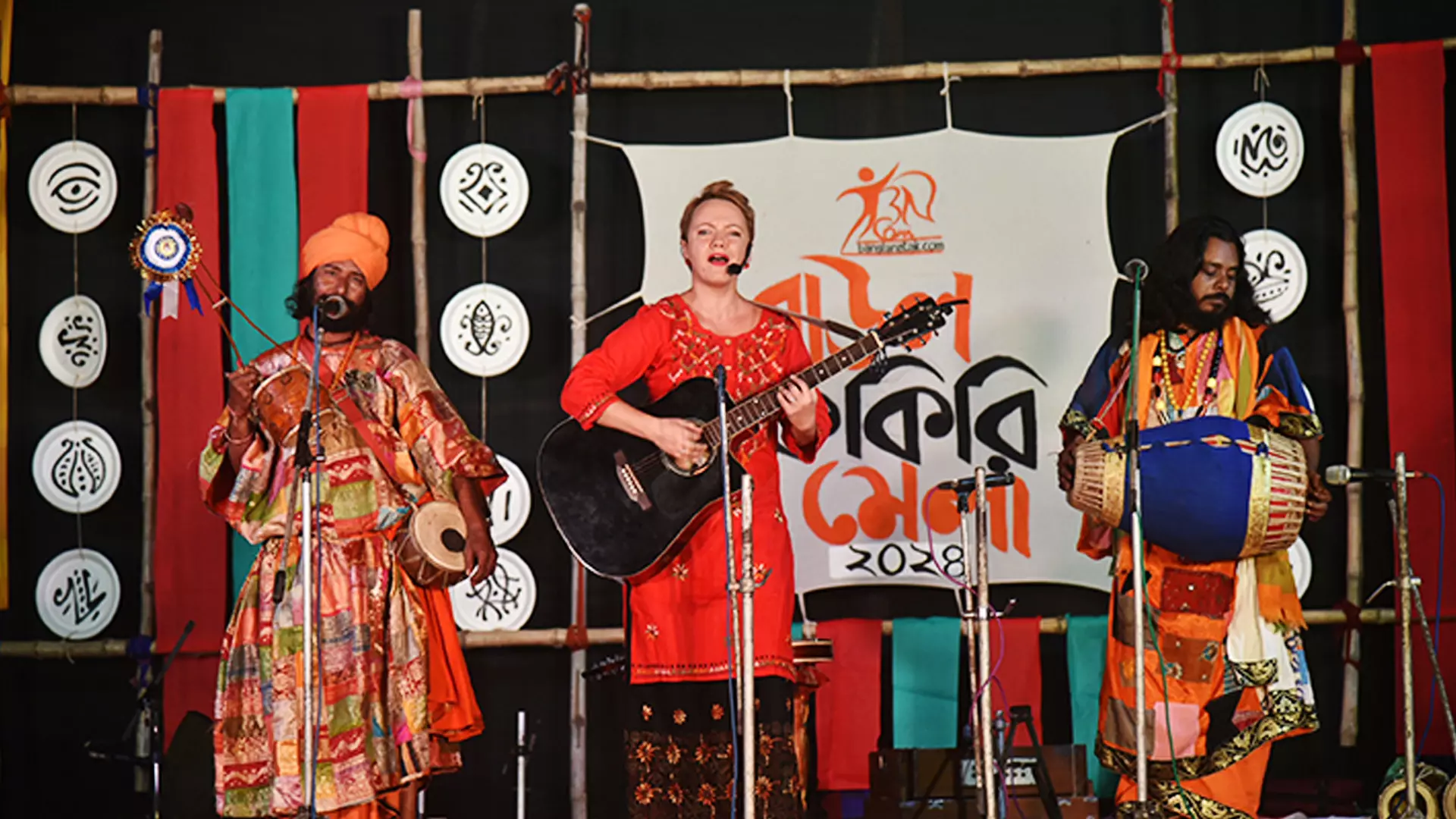
The Baul influence is also dwindling in West Bengal due to the growth of radical Hindutva forces.
It is this growing fundamentalism that Anath Mal, a Baul singer, tried to dispel with the soulful rendering of the above song at the annual Baul Fakir mela at Bannabagram Baul Ashram, in East Burdwan district from November 22-24.
This unique musical festival or fair has been held every year since 2010. This year, about 250 Baul-Fakirs including 40 gurus from about 35 Baul-Fakir akhras from different districts of West Bengal came together to “share the depth and beauty of their peaceful and melodious musical tradition”.
The event is the initiative of the Banglanatak dot com, a Kolkata-based social enterprise working to foster inclusive and sustainable development through cultural intervention.
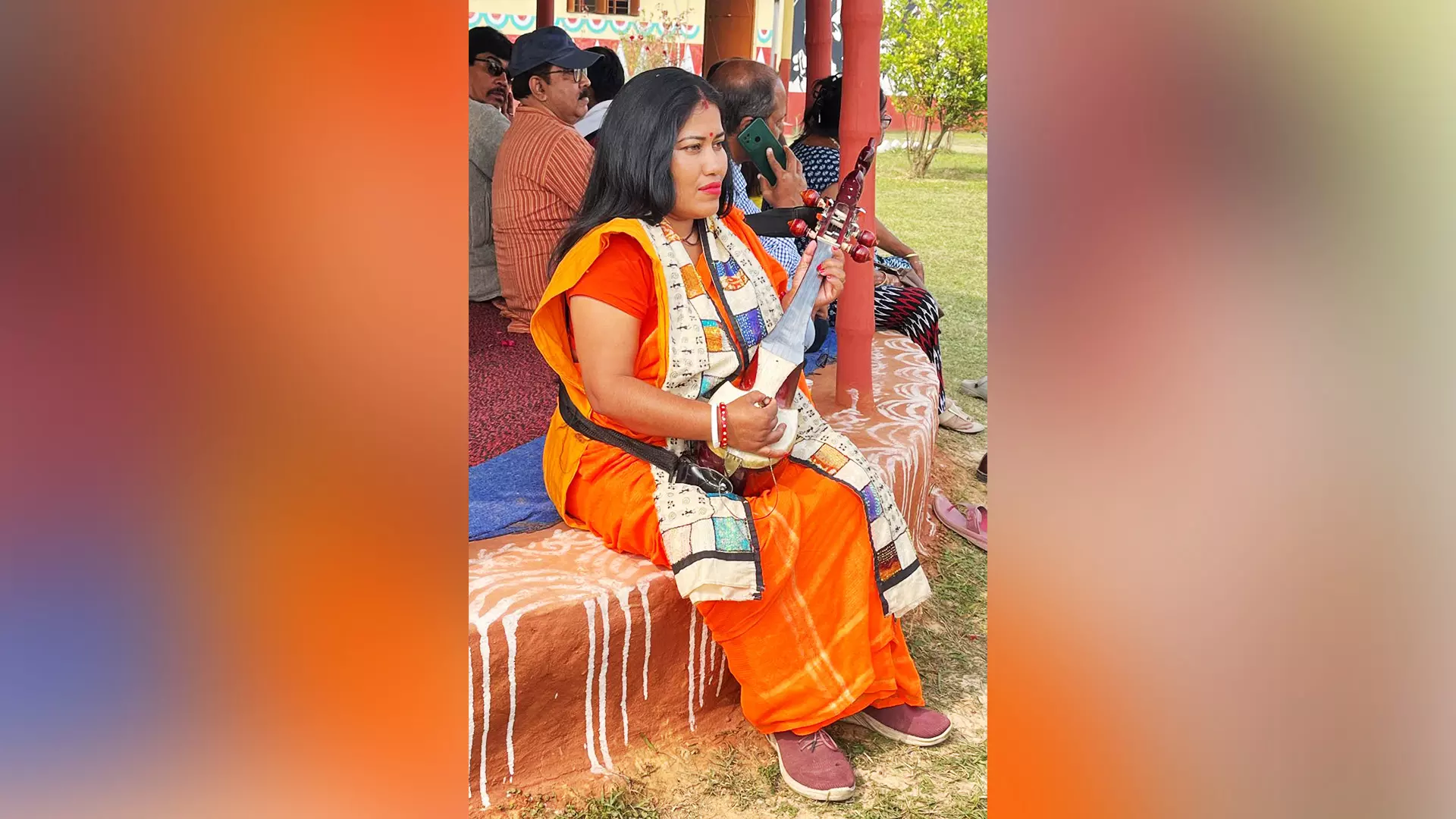
Baul tradition was inscribed in UNESCO’s Intangible Cultural Heritage List in 2008 as one of the “masterpieces of the oral and intangible heritage of humanity” in South Asia.
In the three-day fair, the exponent of the tradition espoused their humanist worldview with the tunes of their ubiquitous ektaras, a single-stringed musical instrument typically associated with Bauls.
Baul philosophy, believed to be over 300-year-old, has a huge impact on Bengali culture and ethos.
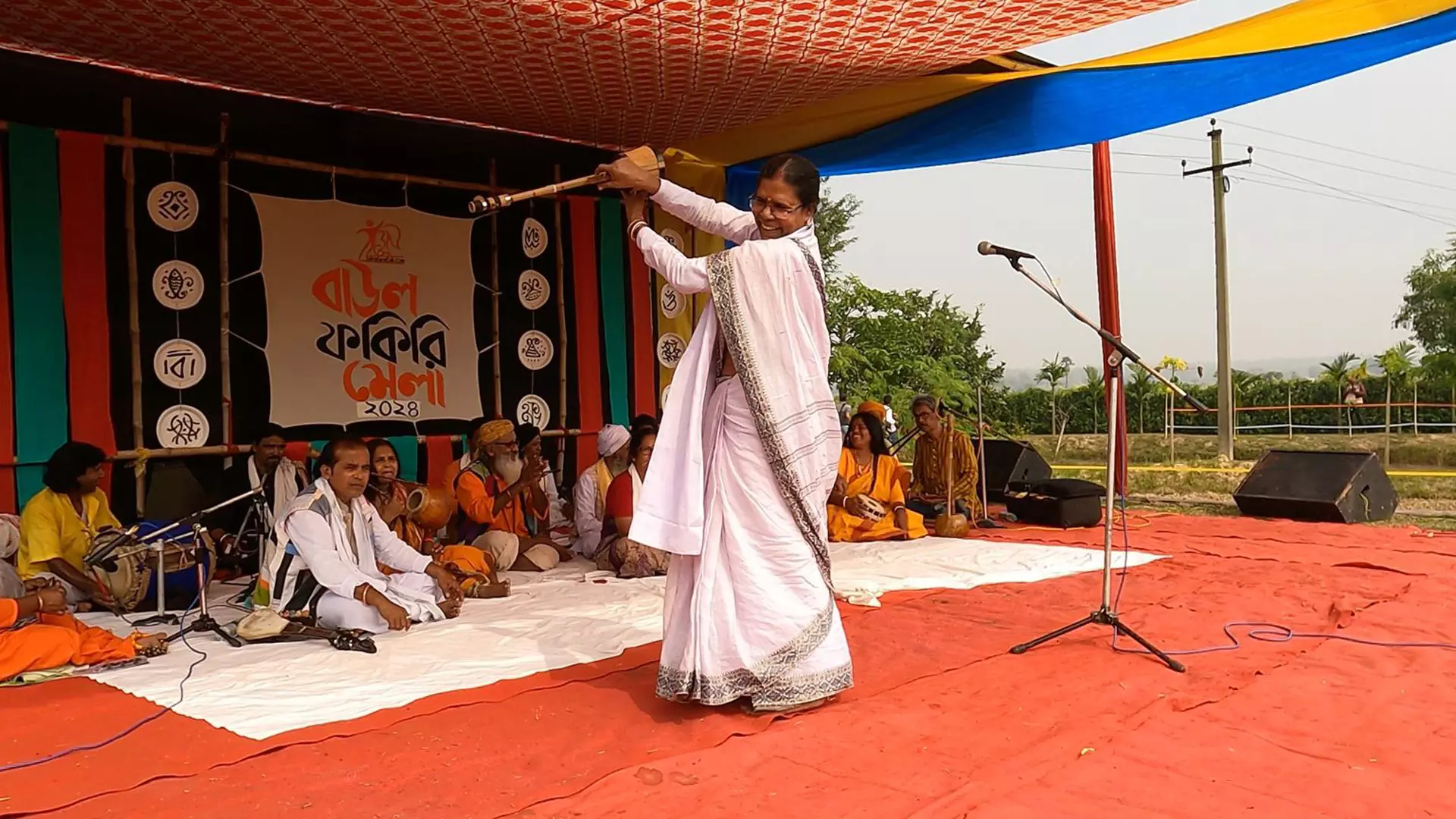
An artist performs at the Baul-Fakir mela.
The collaboration between Hindu ascetics and Muslim fakir is, however, not limited to mere philosophical pursuit in Bengal’s history.
Much before the 1857- Sepoy Mutiny, also known as the First War of Independence, the sanyasis and fakirs revolted against the British in the countryside of Bengal. The rebellion sparked in the mid-1760s, and continued for almost four decades.
The revolt though had no direct connection with Baul tradition, it signified how Sanyasis and Fakirs allied for the common goods. Yet, these wandering Sanyasis and Fakirs have remained at the fringe of Bengali society despite their contribution to the construct of larger societal narrative.
The Baul-Fakir mela in a way is an attempt to mainstream them.
